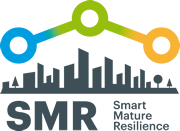Our Tier 2 Cities
CITY OF VEJLE
Vejle in Denmark
Located on the Jutland peninsula in Southeast Denmark, the municipality of Vejle is the country’s sixth largest municipality and is the capital of the Region of South Denmark. Innovation is a key word in the municipality. It believes that continuously innovating will help it maintain its welfare system and continue its ability to provide citizens with world class service and quality of life. Innovation is a perspective and strategy in addressing the city's challenges (e.g. an ageing population, diminishing industries, limited resources to provide services).
Among the innovative initiatives of the municipality is the “Spinderihallerne”(The Spinning Mill), providing Denmark's fastest growing development and innovation environment for people who work in the field of business, design and art; Madværket (The Food Network), a network of local producers of quality food, creating innovation-driven business development of local food and gather food manufacturers, designers, chefs and companies on a commercial basis will promote regional food from the Triangle area; the Green Tech Center, a knowledge and incubation center for green energy companies; and Bylaboratoriet (City Laboratory) where the collective plan for the city’s development is presented and where citizens contribute to the vision of the development.
Vejle in Europe
Vejle enjoys the high quality of social services, high quality of life, strong citizenship and transparency common to Denmark’s cities. The city is located along one of Denmark’s main transport corridors connecting the north of Denmark to Germany and the rest of Europe. Vejle’s industry is increasingly based on the knowledge and creative economy and the Greentech Lab is the focus of sustainability innovation in a European and international context.
VEJLE AND RESILIENCE

Resilience Goals
One of Vejle’s resilience goals is to develop a flood strategy that allows the city to continue to operate in the event of flooding. The current strategy is limited to evacuation, and the risk of flooding is too immediate to limit its policy to emergency measures. Therefore, Vejle will develop a resilience plan to resist, absorb and recover from flooding, and to facilitate traffic and functioning systems in the city despite the flood risk.
Aside from flooding, Vejle aims to address the government’s technological and human vulnerabilities and ensure that all citizens have access to government information and services even in the case of breakdown. Further, the city aims to strengthen social capital and community support. In the context of a knowledge economy, the city aims to become economically resilient. Finally, the city prioritises the empowerment and integration of migrants and socially at risk groups.
Planning Vejle
Vejle is in the process of finalising its City Resilience plan, drawn up in partnership with the 100 Resilient Cities Network. A research centre on energy resilience and big data management has been established. Vejle has installed pumps and underground pools to check the inflow of water into the fjord. Installation of underground water storage systems has been implemented in some new public new constructions.
In developing the city, water is seen as a resource that must be utilised. In terms of building social capital, various projects that involve volunteerism have been implemented in the residential complexes with a majority of migrants and socially at-risk groups.
Resilience Engagement
Member of 100 Resilient Cities Network in partnership with The Rockefeller Foundation
Vejle Resilience Office in partnership with the Greentech Center Vejle
City factsheet
Population
Area
Geography
Significant sectors
Approx. 110 000
144 km2
Vejle Fjord
Green Technology, creative start-ups, IT, food, transport and service

This project has received funding from the European Union’s Horizon 2020 research and innovation programme under grant agreement no. 653569.
